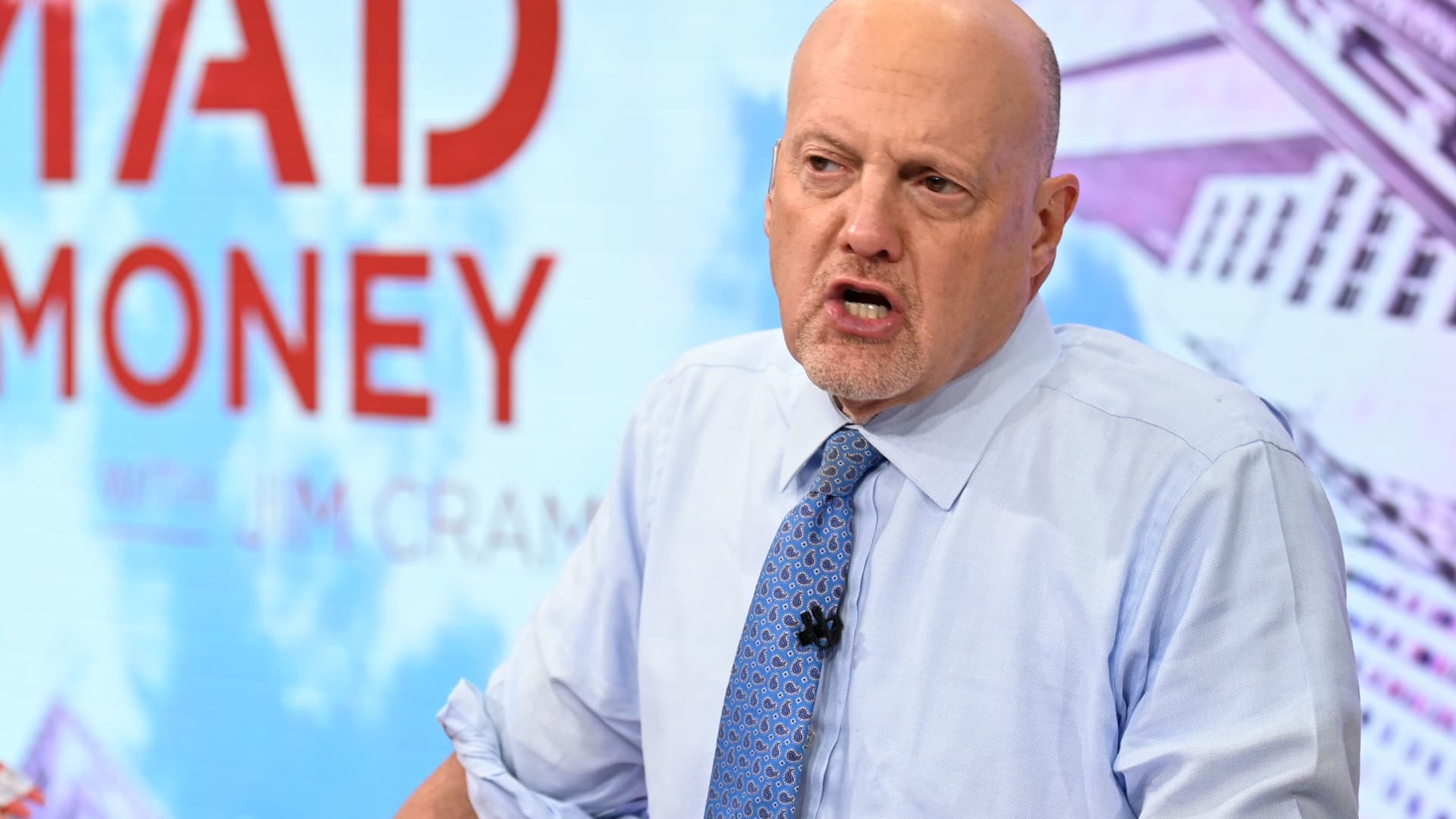Jim Cramer’s guide to investing: Insider buying and short interest

CNBC’s Jim Cramer told investors about a potentially bullish tell: Watch for when management buys back shares of a stock with high short interest.
A short position is created when an investor sells shares they borrowed with the expectation that they will decrease in value. If the stock falls, the investor can buy the shares at a lower price and make a profit. Short interest refers to the total number of shares that have been sold short and not yet repurchased.
If a company’s management starts buying back shares with high short interest, it could be a sign they think the stock won’t go any lower. So short sellers may start to quickly repurchase the shares to minimize their losses, leading to a short squeeze that ultimately sends the stock higher.
“If a lot of people are shorting a stock and management starts buying it in sizable amounts, then you should start doing your homework,” Cramer said. “Usually, it makes sense to side with management—then you can ride it higher and higher in true Jackie Wilson style, as the shorts panic and push shares higher in their desperation to cover their positions.
But it’s not always that simple, Cramer cautioned. He told investors to by very careful about getting involved with a company “in the crosshairs of the shorts.” If the market is in poor shape and investors are anxious, shorts have the potential to damage a stock even if the company’s fundamentals are solid.
Cramer suggested investing in stocks with solid dividends. Short sellers may be deterred from completely wrecking the stock because they must pay back those dividends from the borrowed shares.
“When you see a stock with a big dividend that’s being attacked by shorts and the yield’s going higher, that’s often a terrific place to be, especially when the insiders are snapping up stock, too,” Cramer said. “Insider buying plus heavy short interest can equal raging buy, as long as you avoid situations where the shorts are determined to crush the stock at any cost.”







